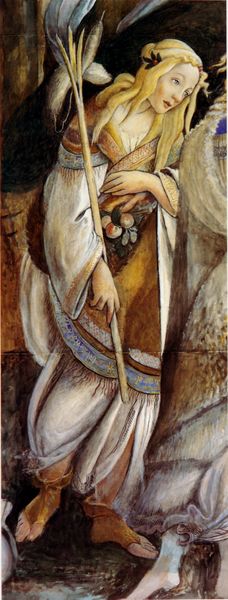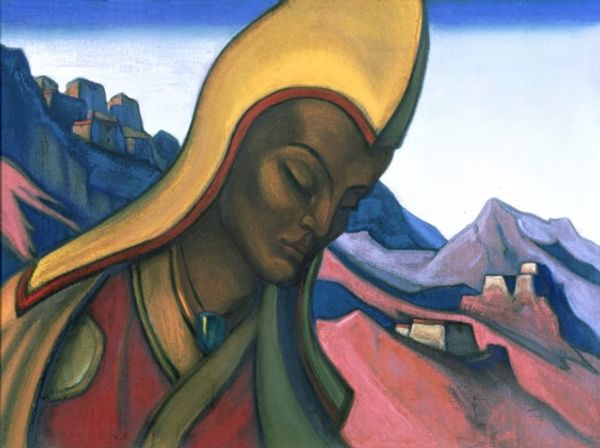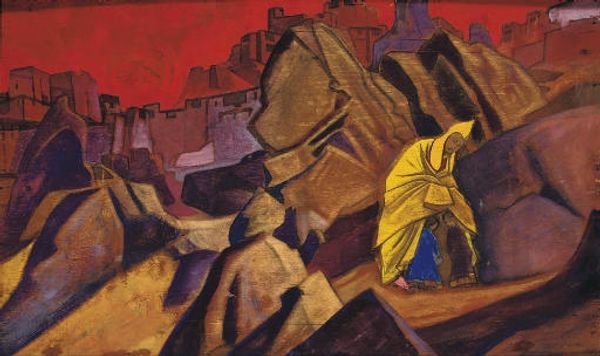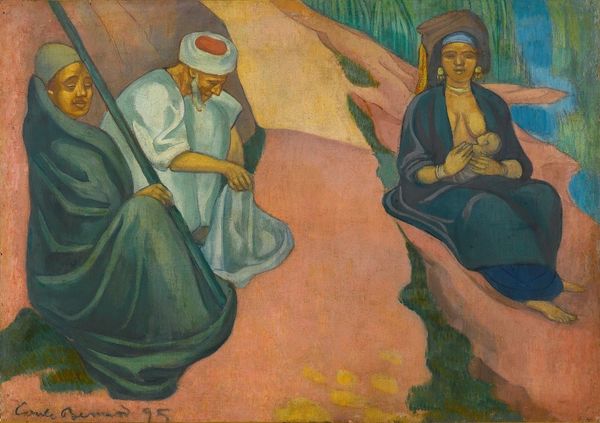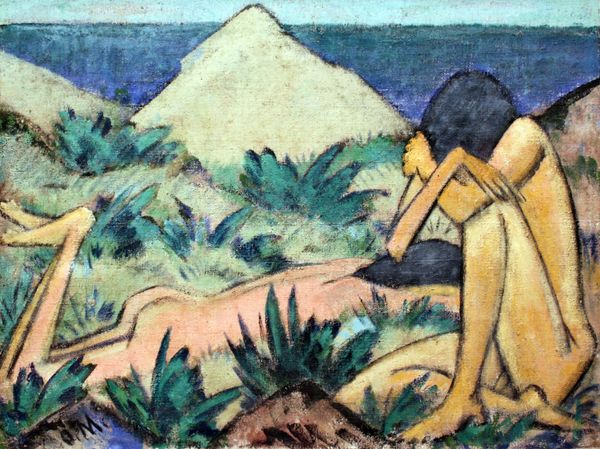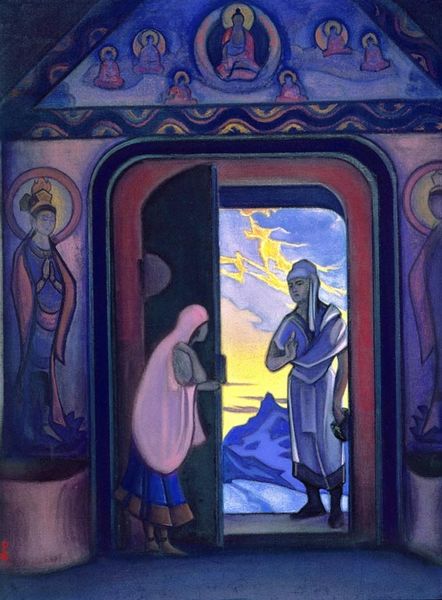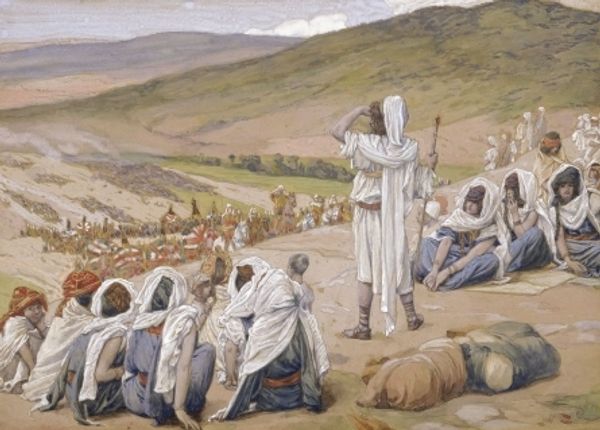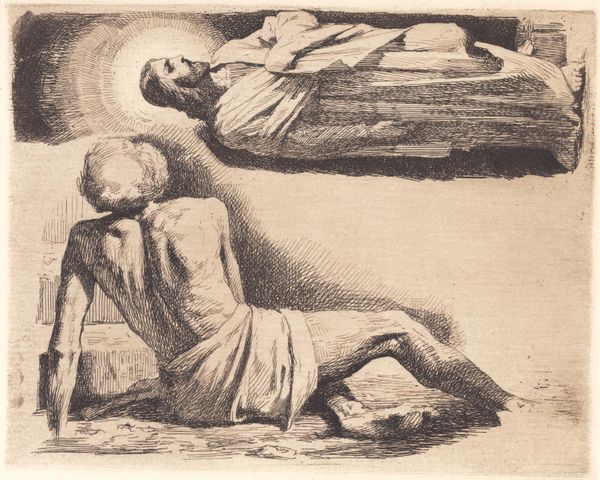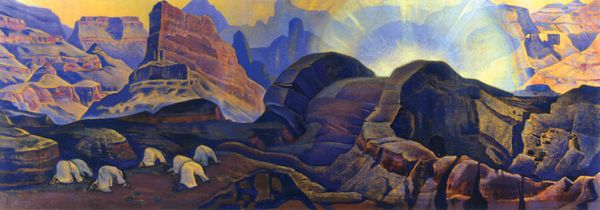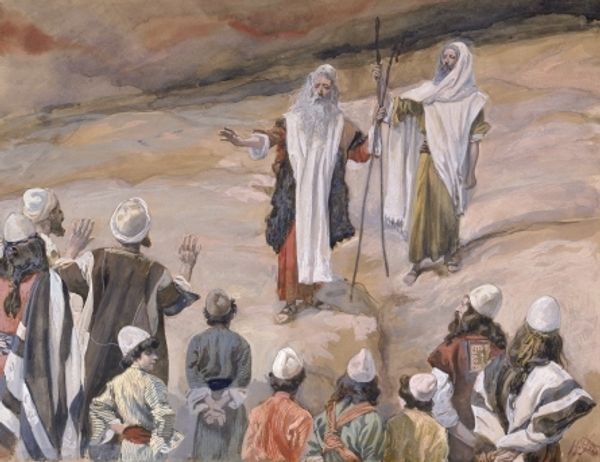
Dimensions: 74 x 117.5 cm
Copyright: Public domain
Curator: It evokes a profound stillness, doesn’t it? Like time holding its breath. Editor: Indeed. This is Nicholas Roerich’s "Signs of Christ," painted in 1924. It’s an oil painting, currently housed at the Roerich Museum in Moscow. Notice how Roerich merges landscape and figuration to create something almost otherworldly. Curator: The landscape is almost sculptural in its rendering. Look at those textured, layered surfaces - I’m immediately thinking about the materials themselves: the layering of the paint, the physical act of applying it to create these forms. Did he use palette knives? There's a real materiality that translates through the image, speaking to a dedicated working process, where labor becomes almost meditative. Editor: The layering definitely gives a sense of depth, drawing us in. But, Roerich’s work here, part of the Russian Avant-Garde movement, goes beyond materiality; it’s charged with symbolism, particularly the connection between earthly spaces and spiritual concepts. The imagery serves a deliberate public role in constructing meaning around Christ and related histories. What’s that inscription? Curator: It looks etched into the surface, doesn't it? Almost primitive. Like something excavated rather than created ex nihilo. In relation, note those figures rendered almost in silhouette – a woman, perhaps, being watched by a man standing just behind her in traditional Middle Eastern garb. How was that clothing produced? Were the figures made to feel dehumanized? Are they truly of this earth or imagined beings placed there by the laboring hand? Editor: Precisely. That is what is truly fascinating: they give such reverence but against this larger spiritual backdrop; that image is then being projected back on 1920’s Russia through exhibitions, prints and so forth and consumed. Roerich, remember, was deeply involved in the spiritual and esoteric, using his art as a vehicle for universal themes. And to connect all this work with manual artistic labor of making – fascinating. Curator: Absolutely, his emphasis on the making brings into consideration the role that artmaking itself plays, connecting both high art and simple craft by means of labor itself. What better expression of that effort and meaning than "Signs of Christ" itself? Editor: It certainly offers food for thought regarding faith, imagery, and the hands that shape our understanding.
Comments
No comments
Be the first to comment and join the conversation on the ultimate creative platform.
